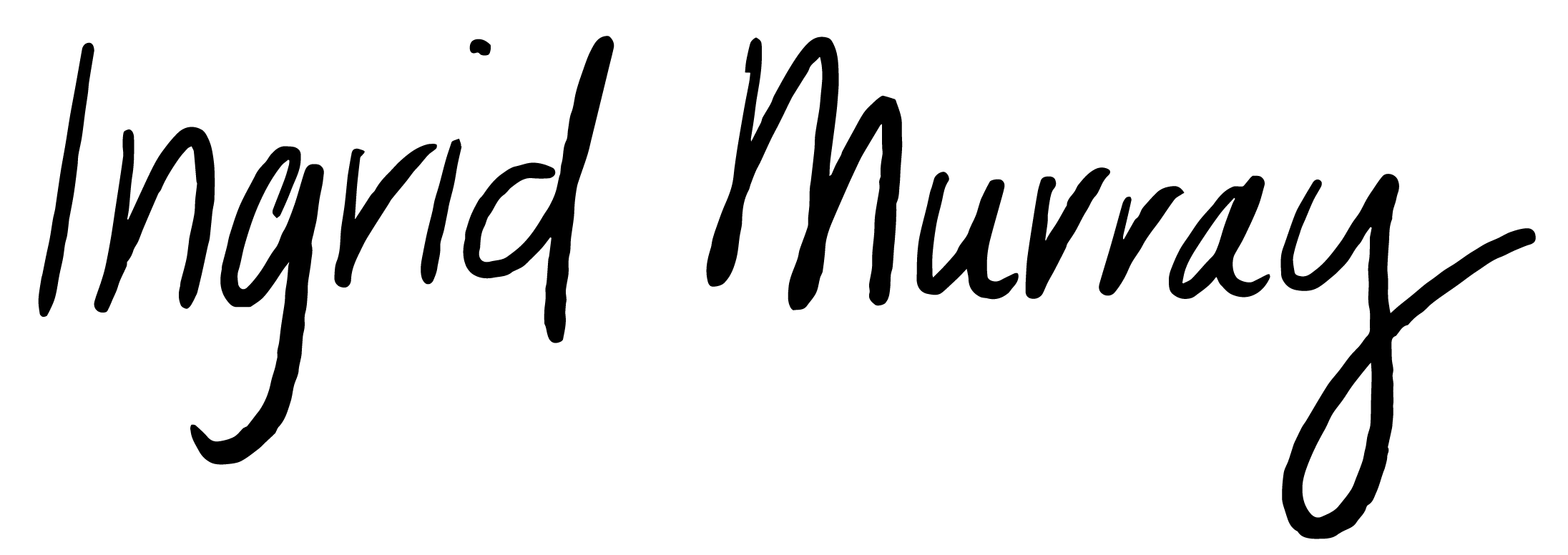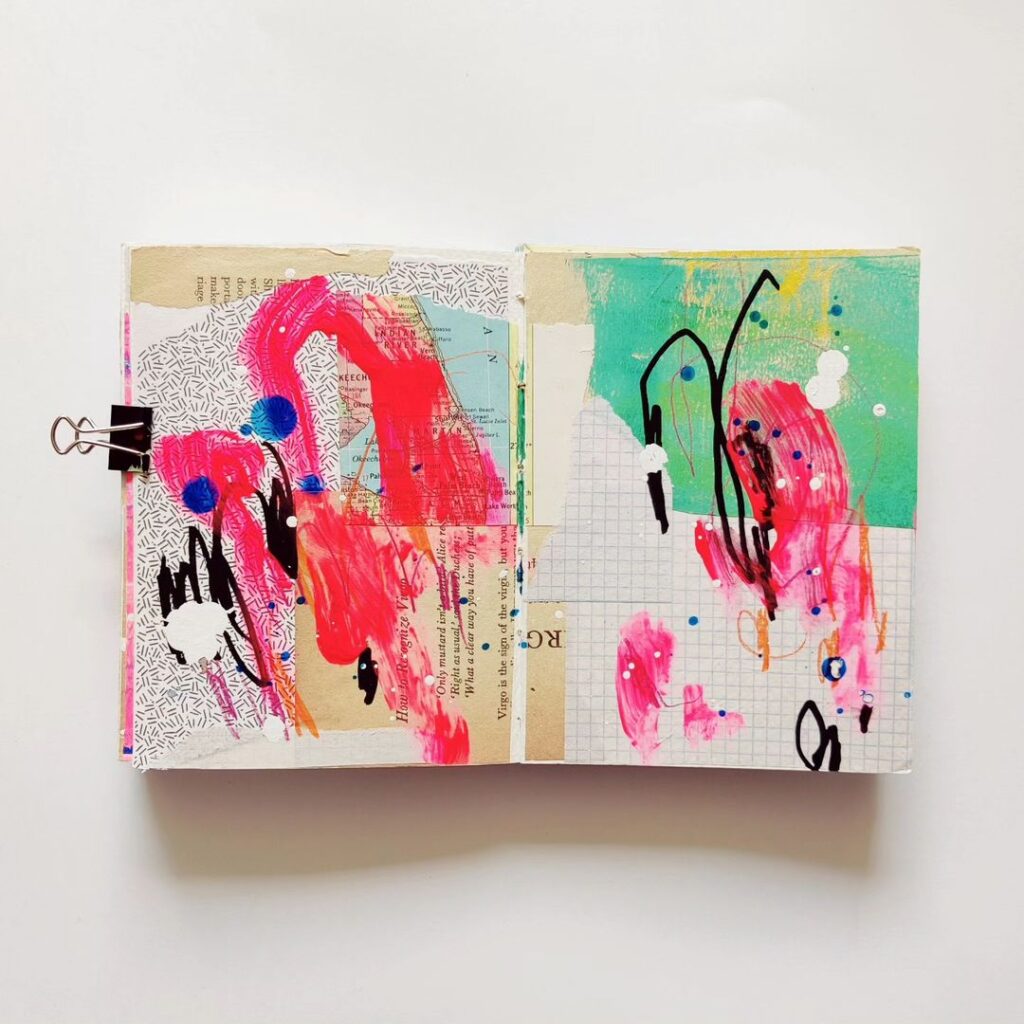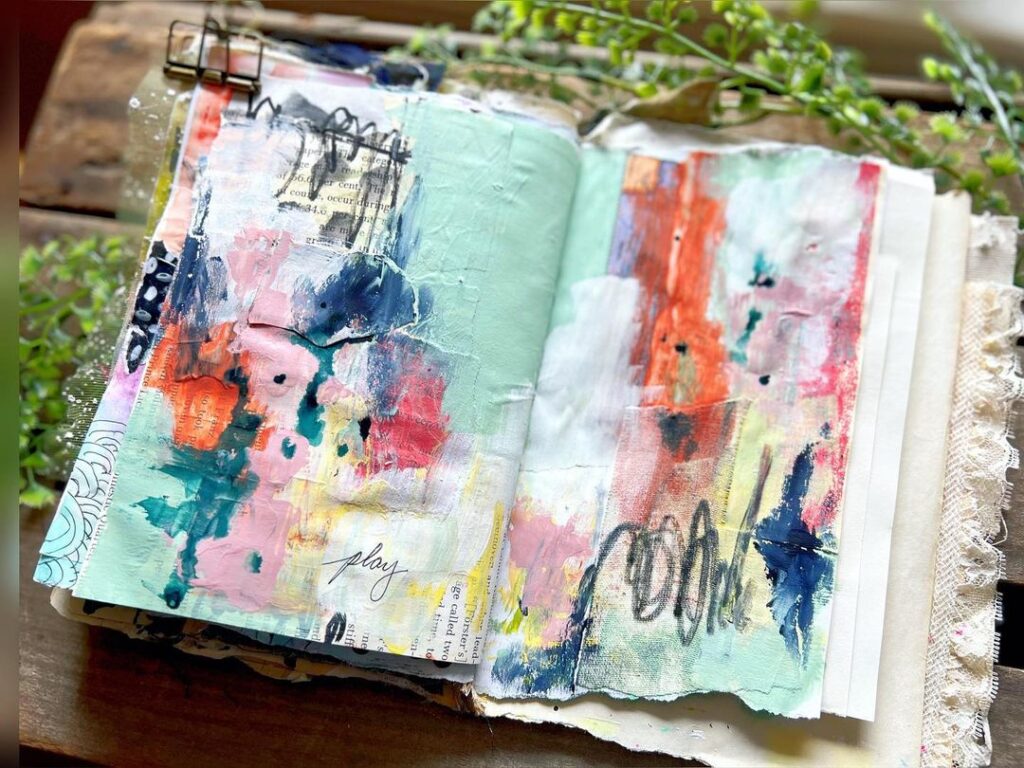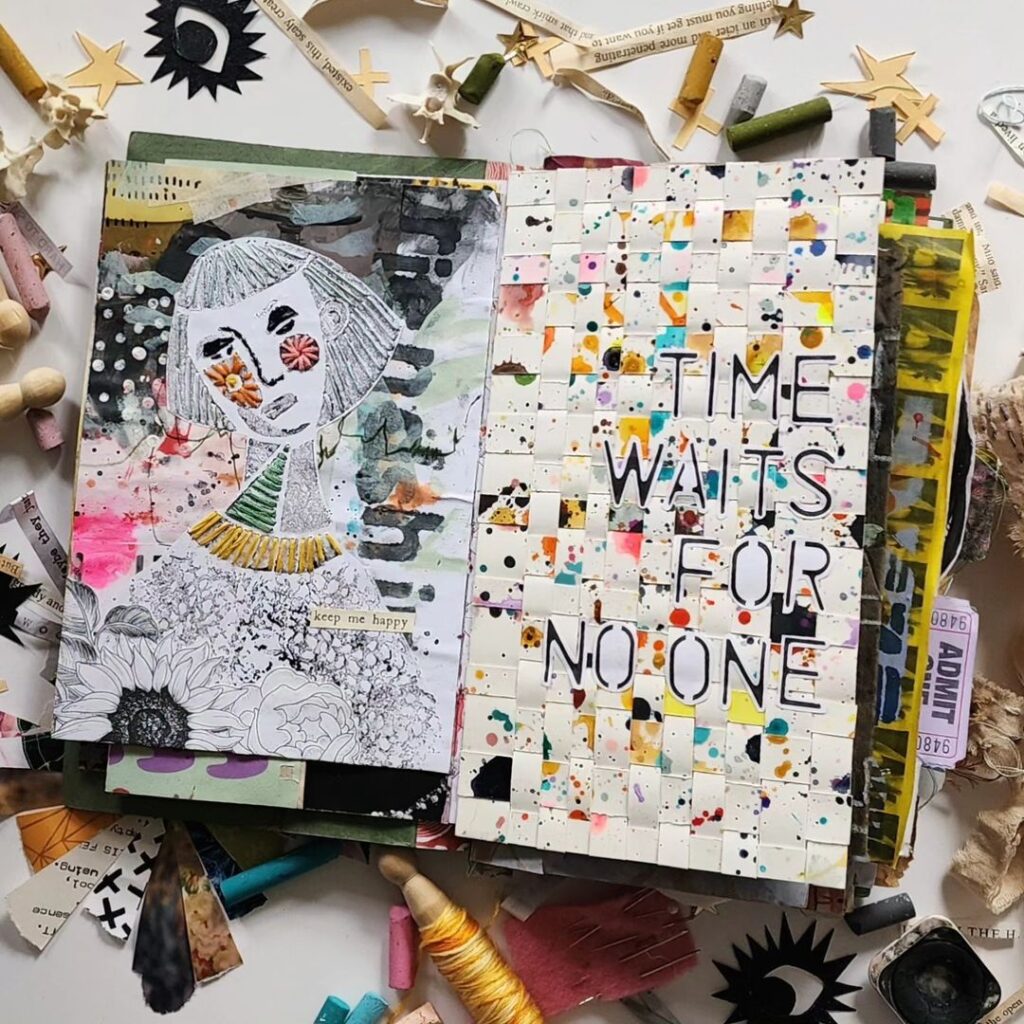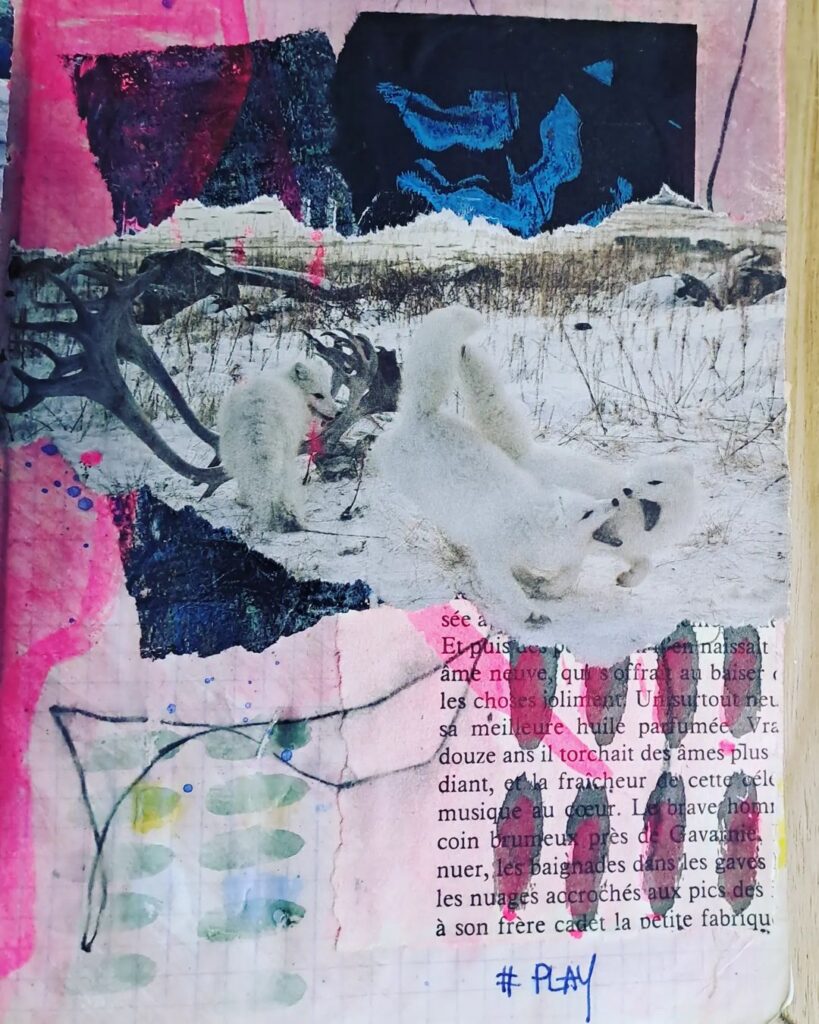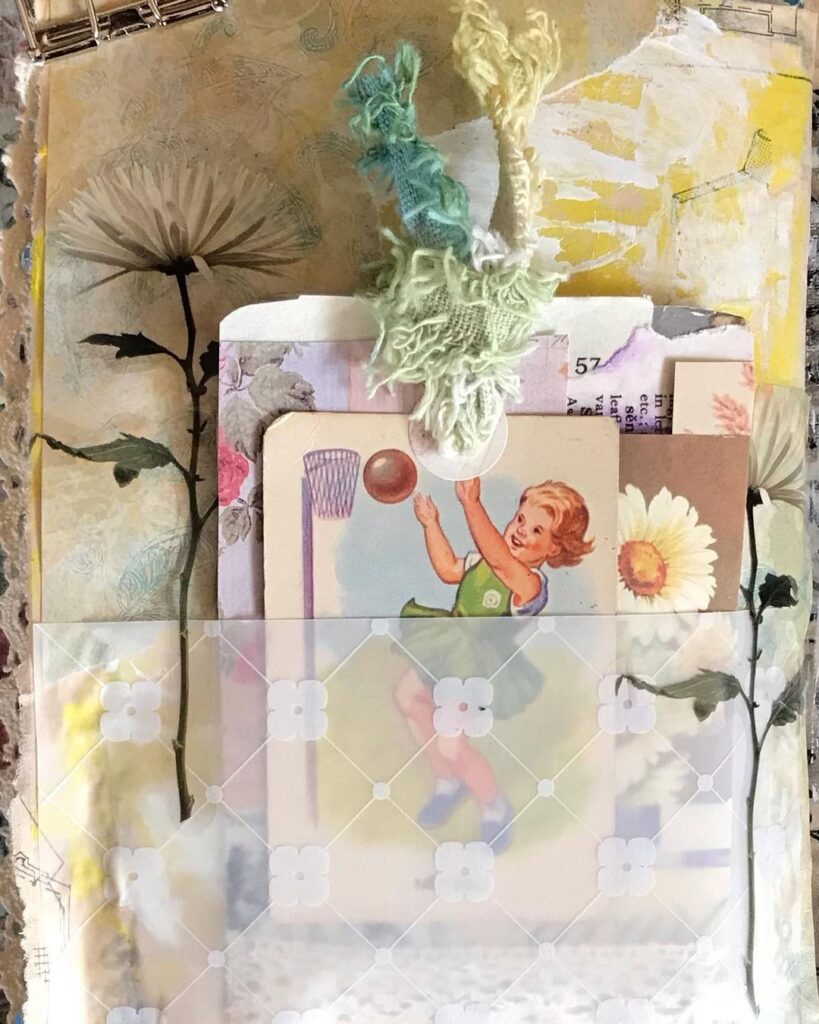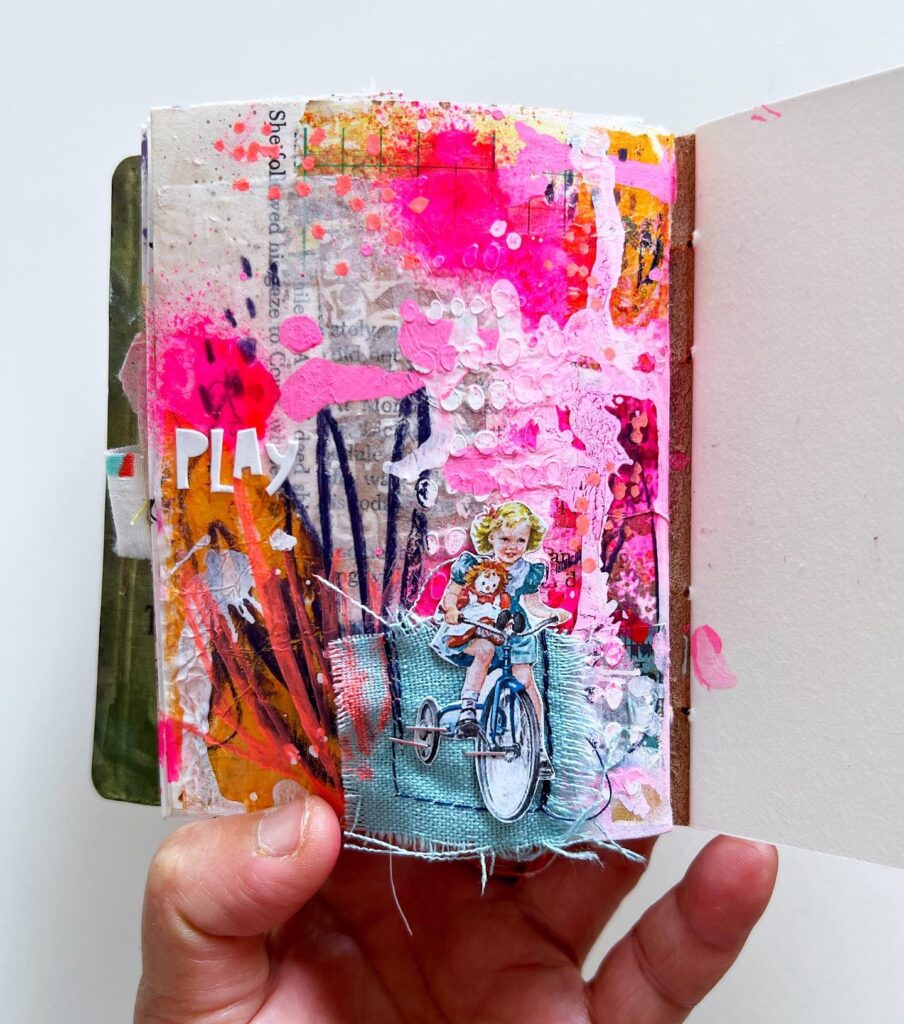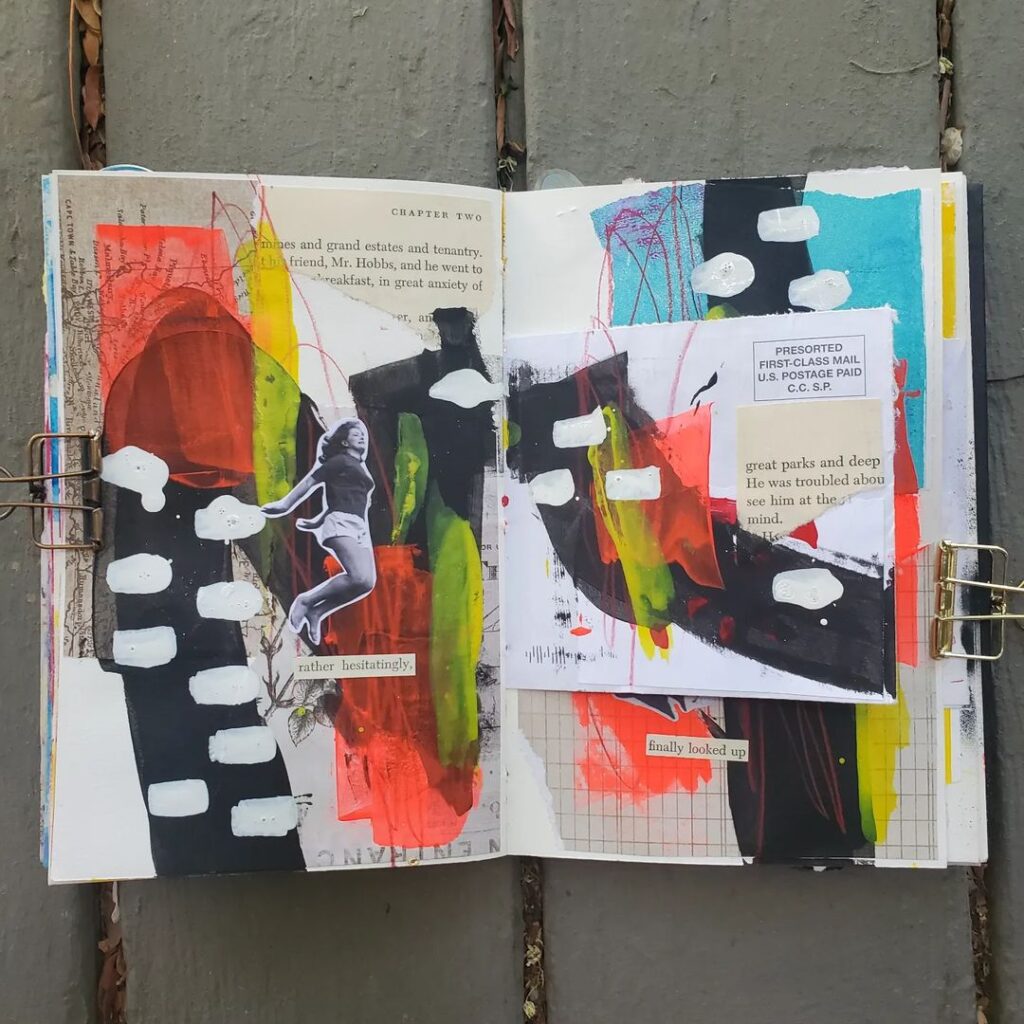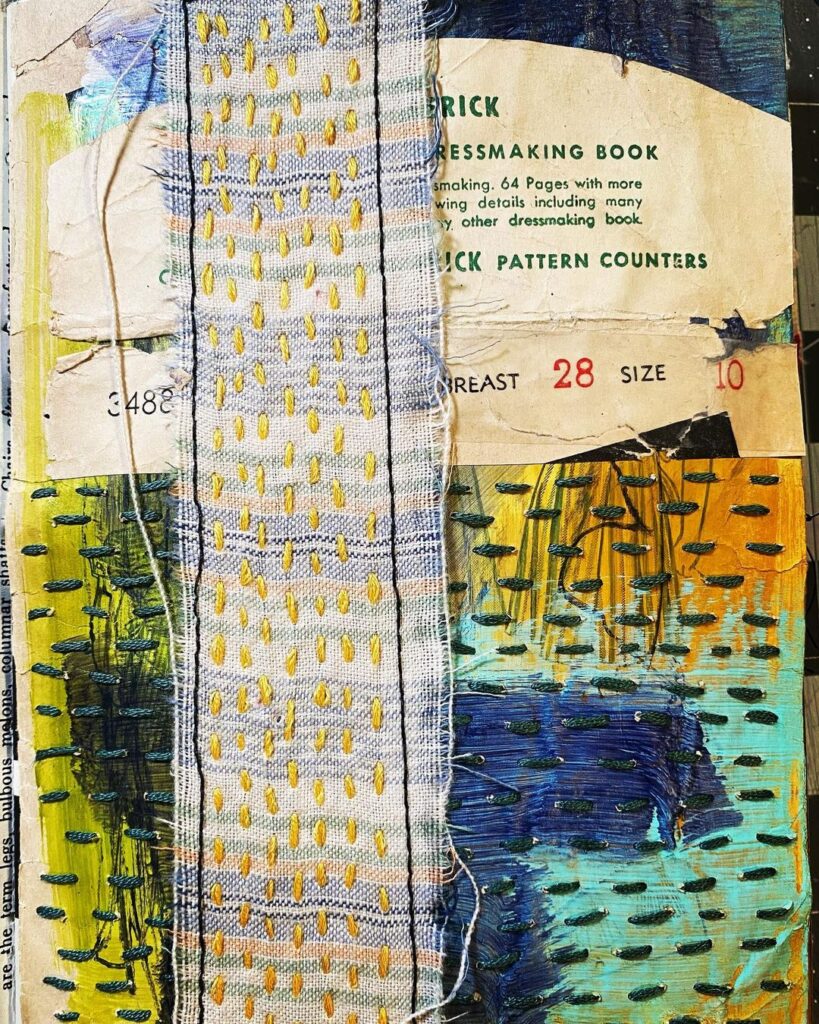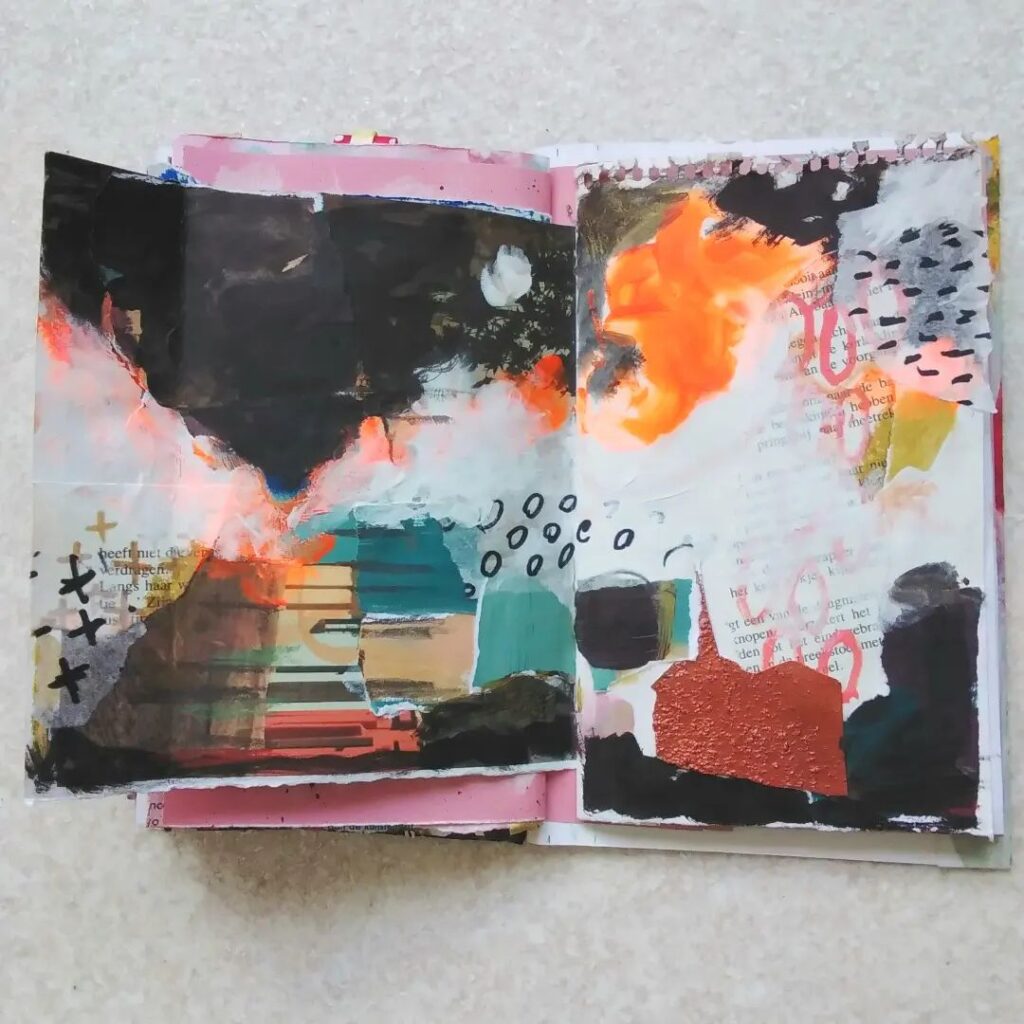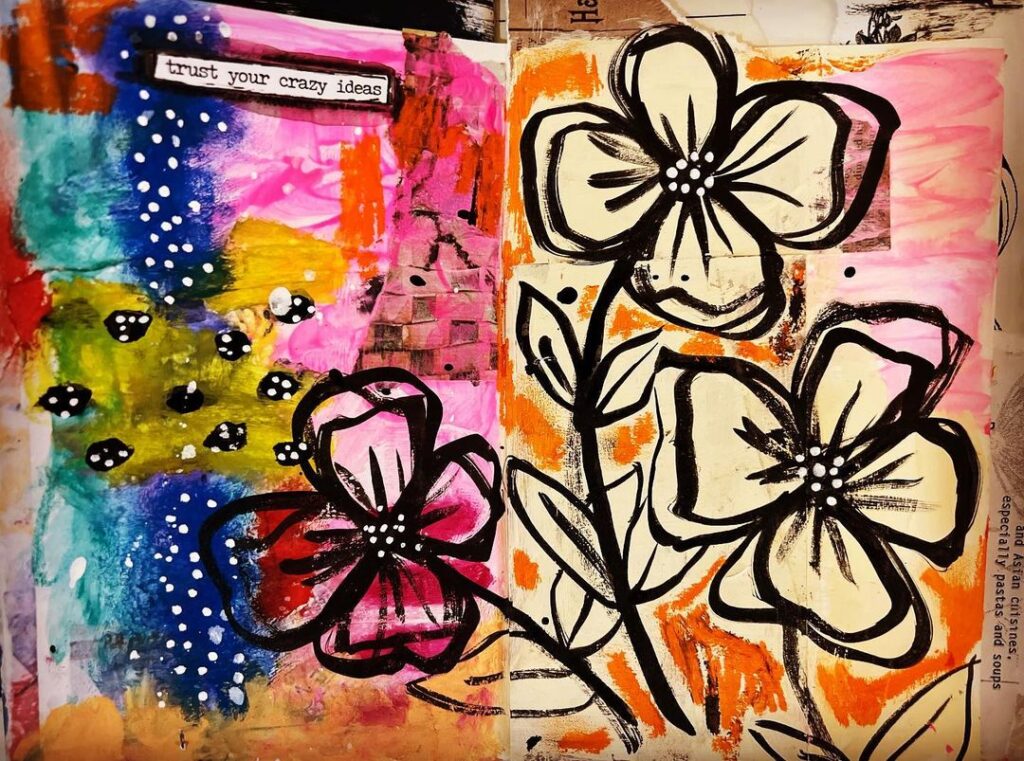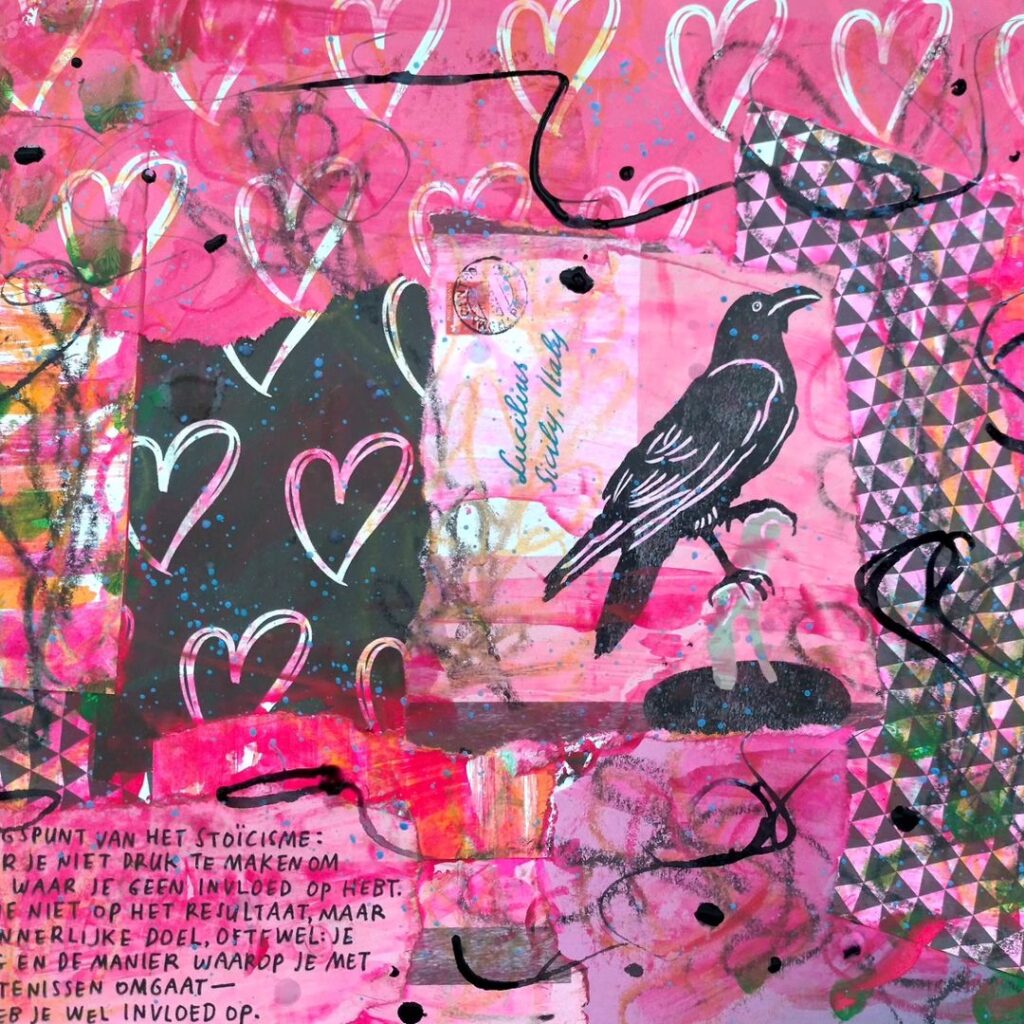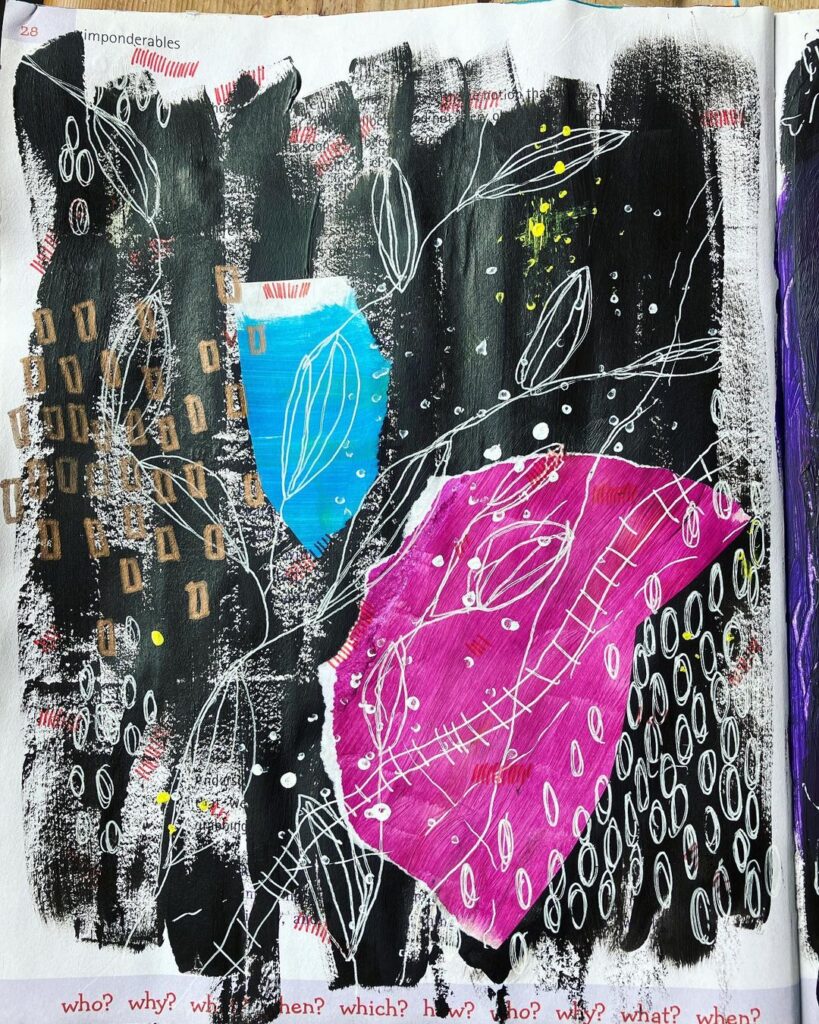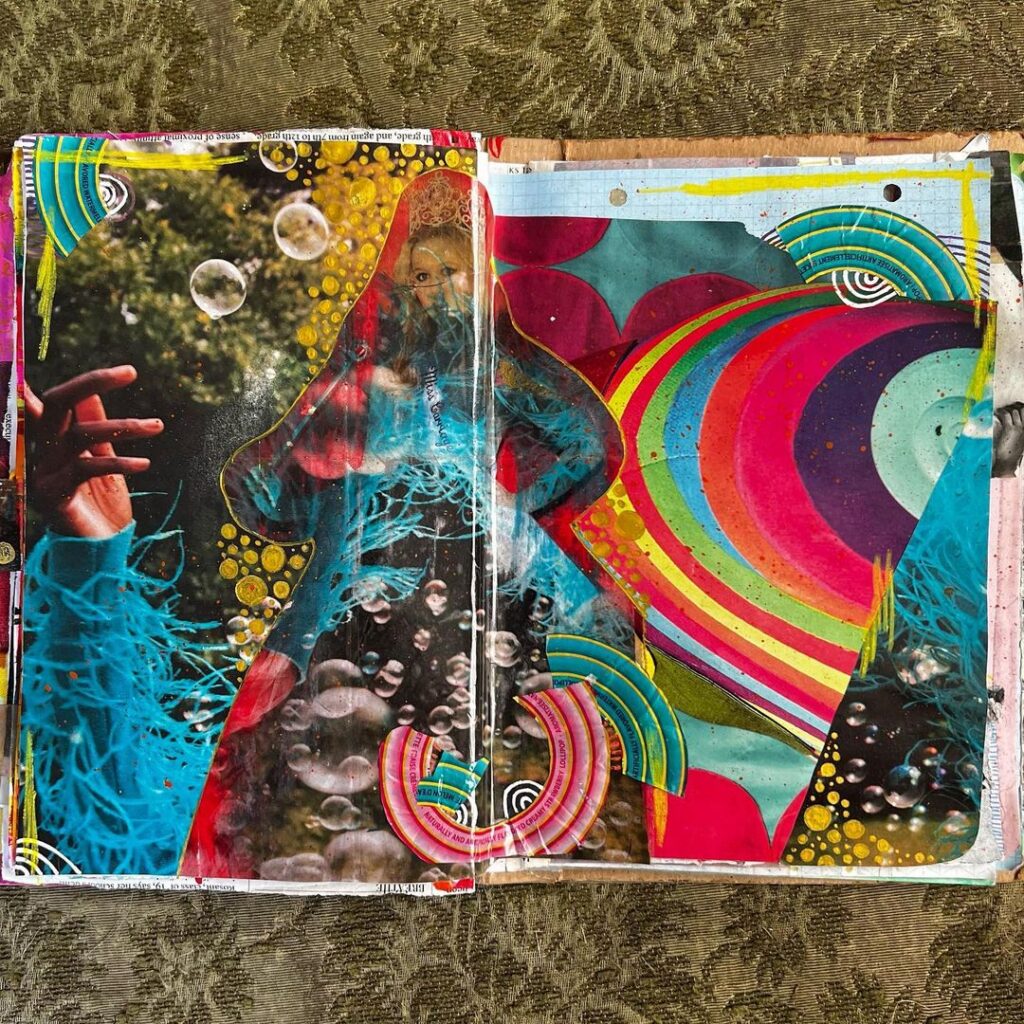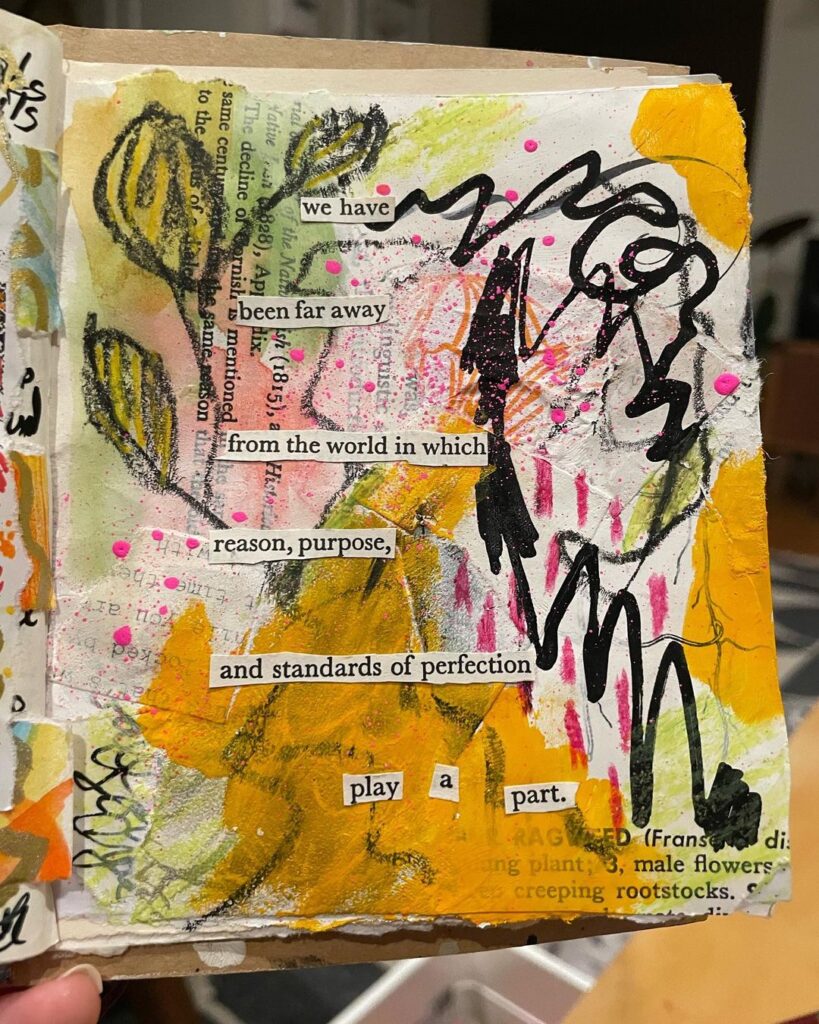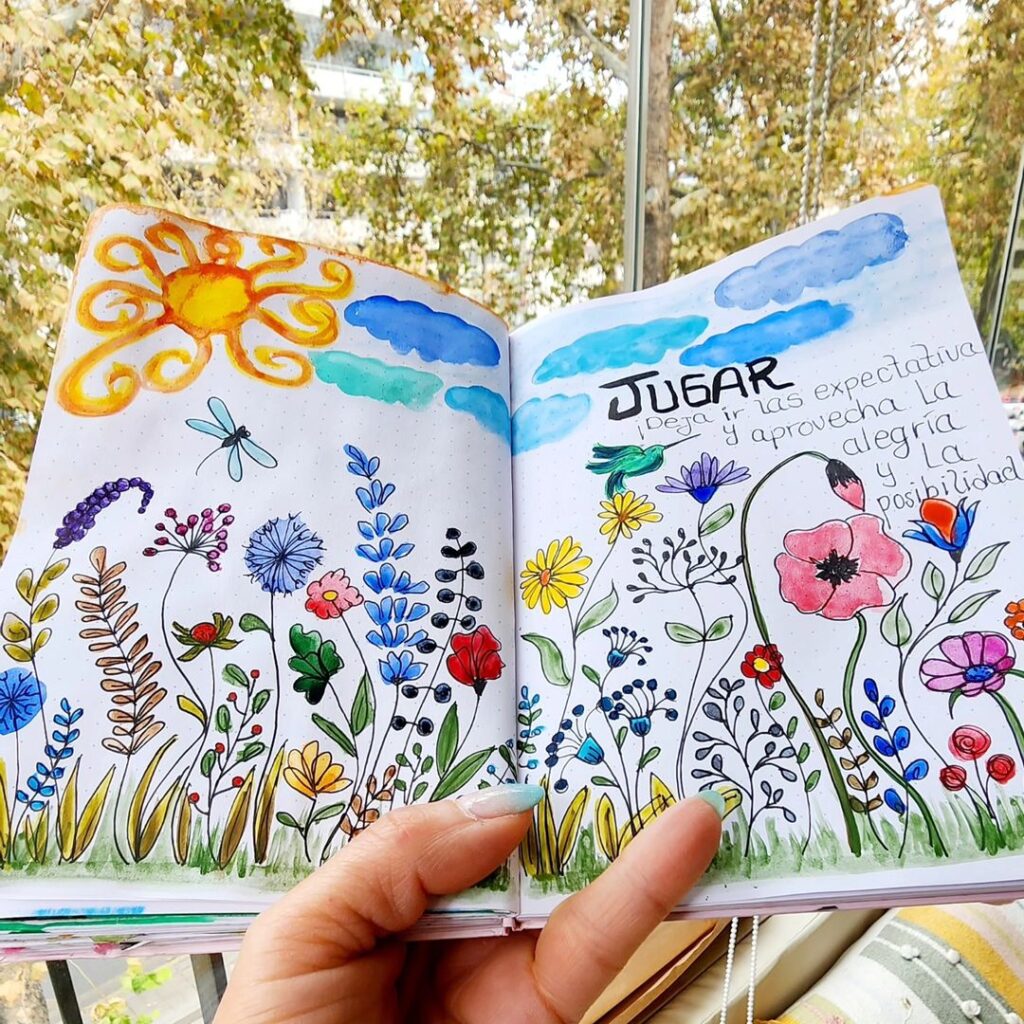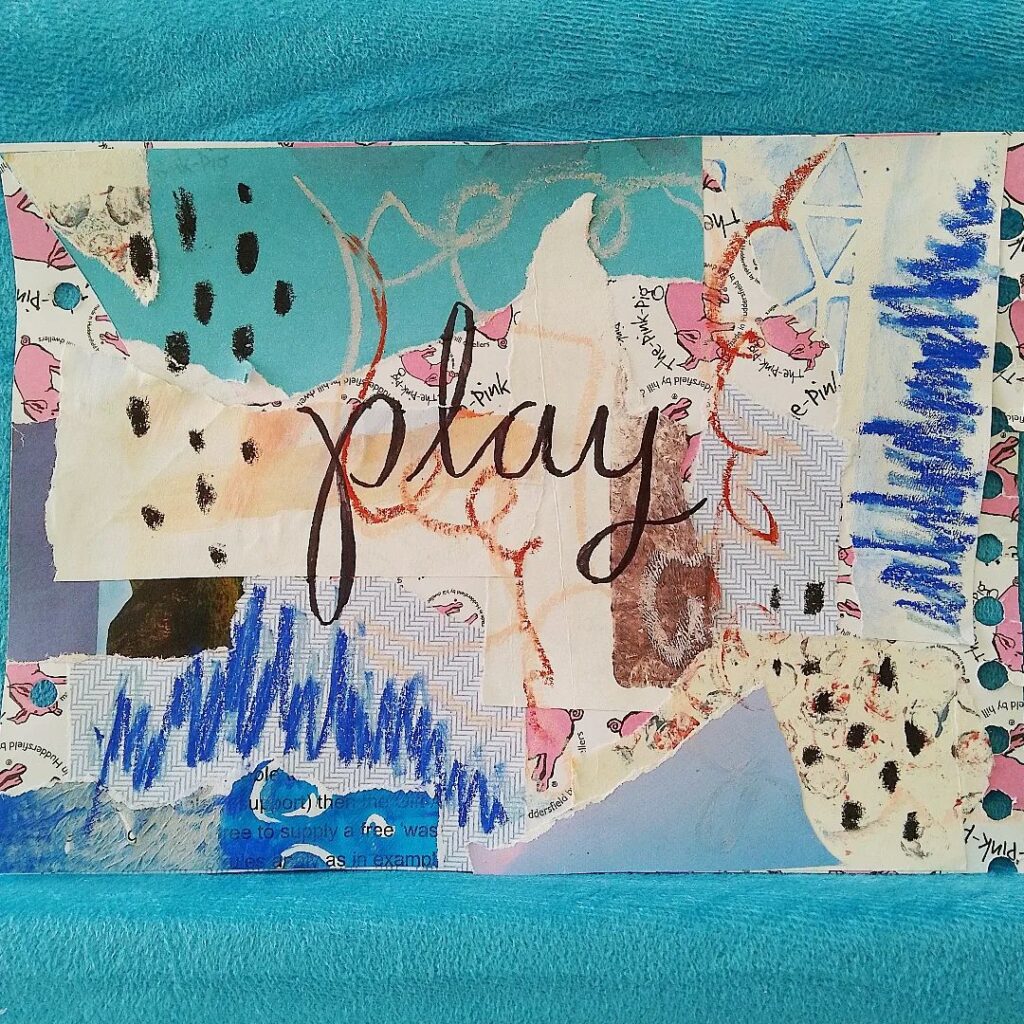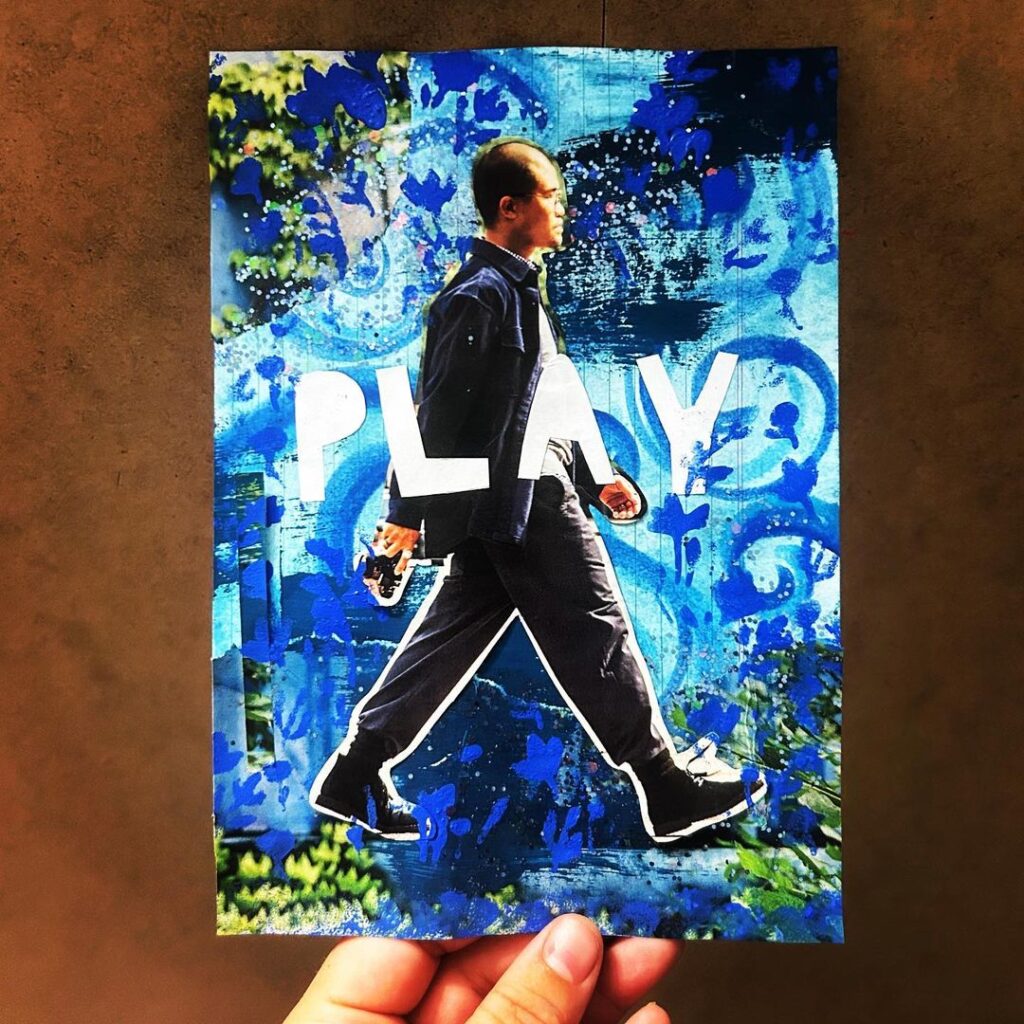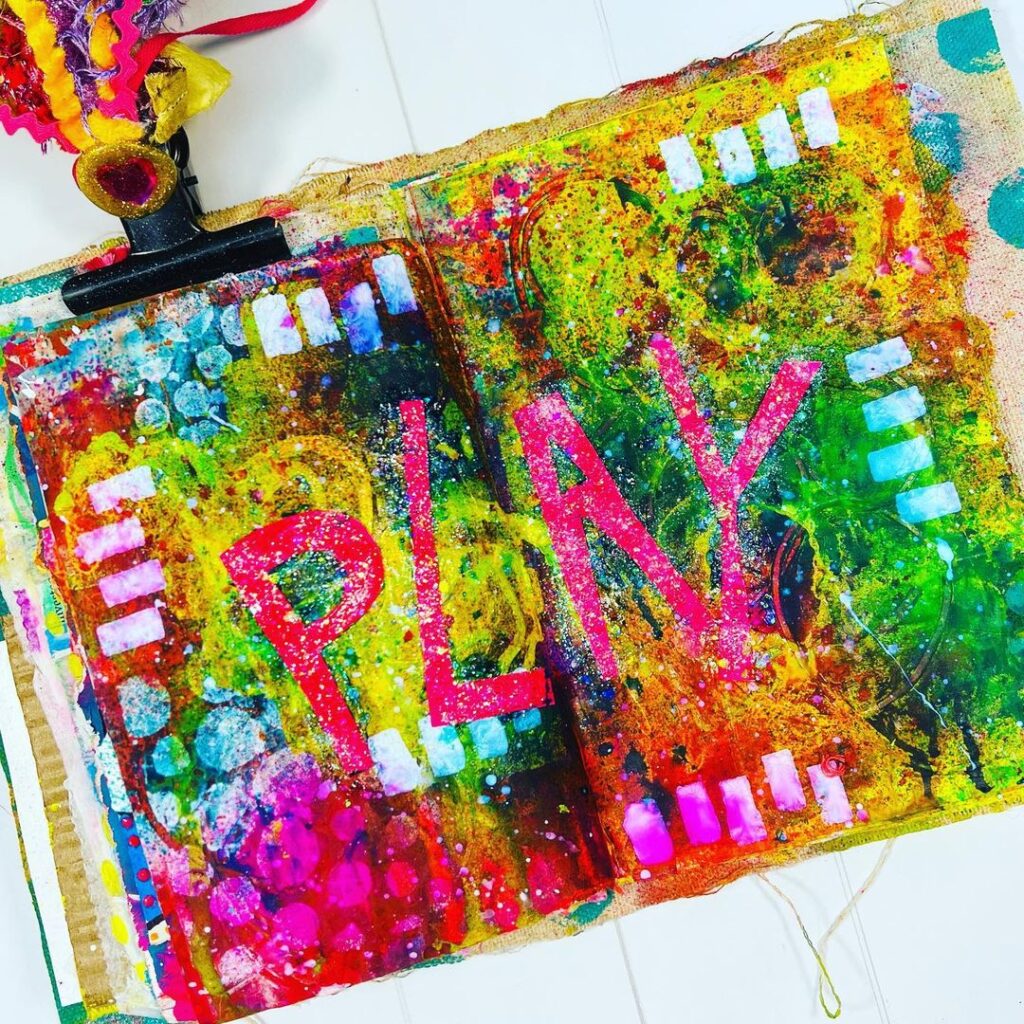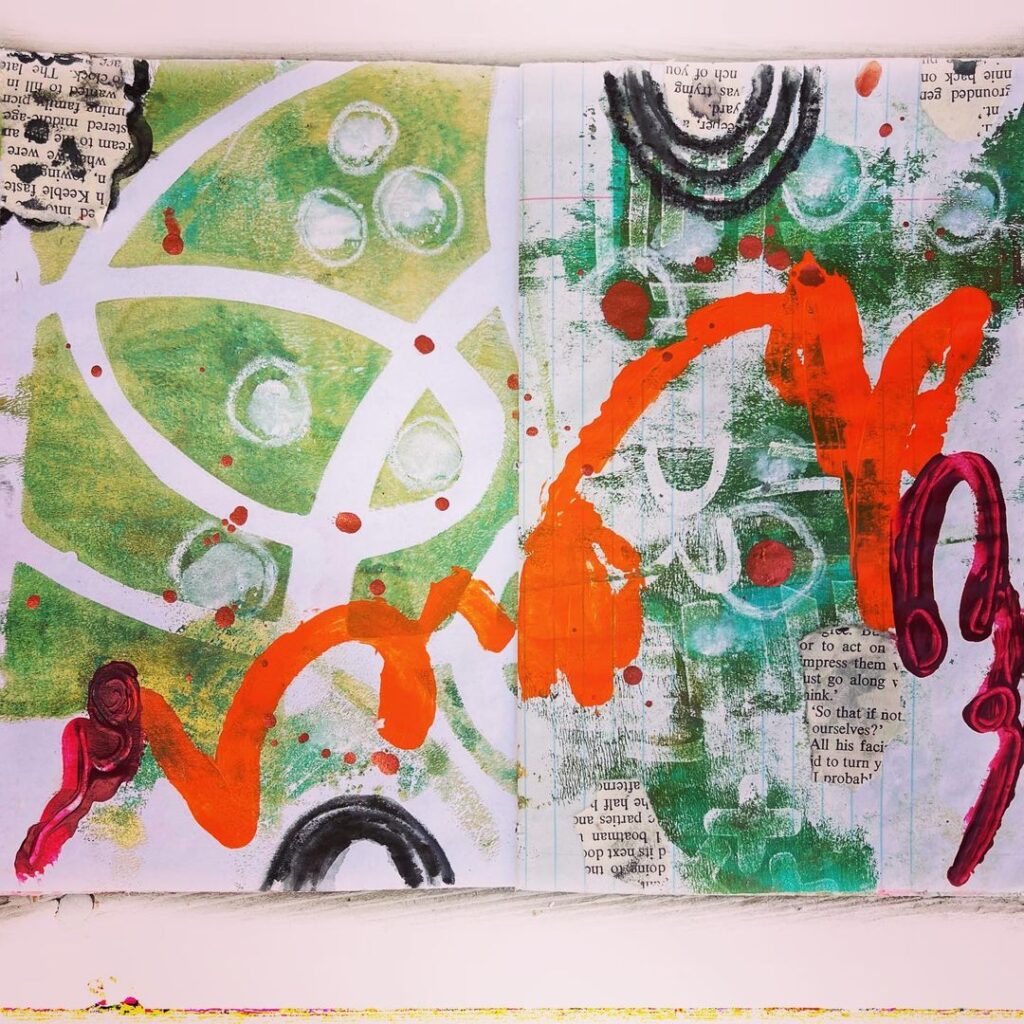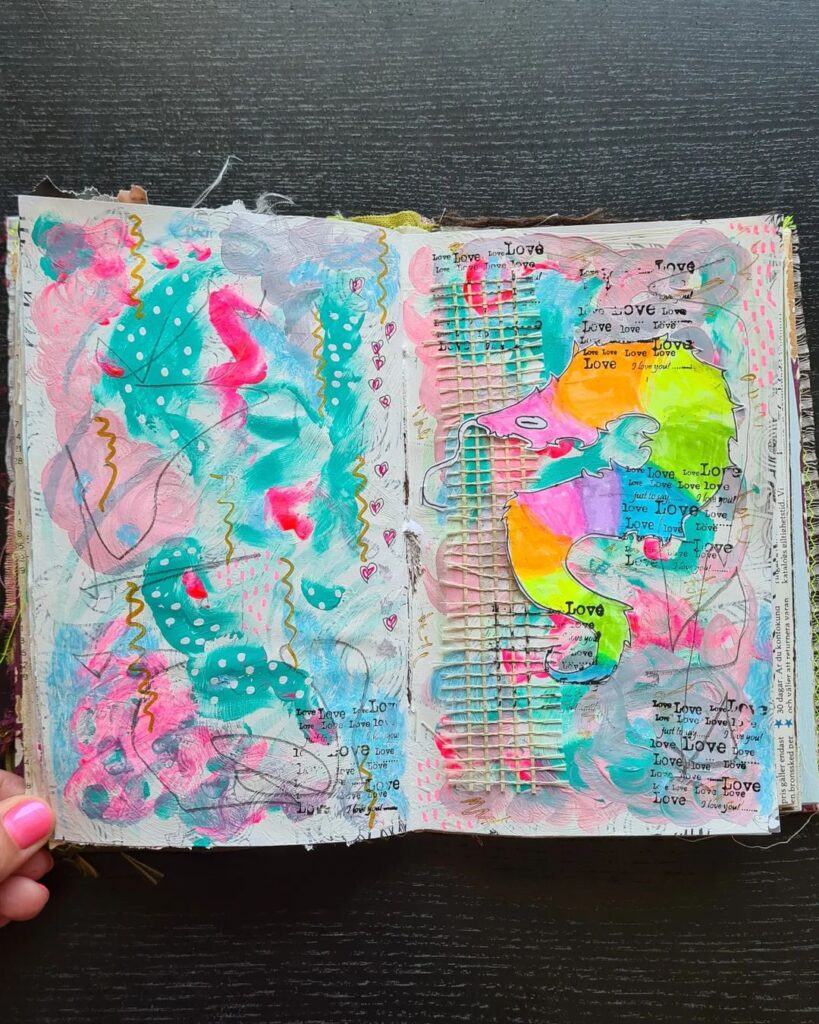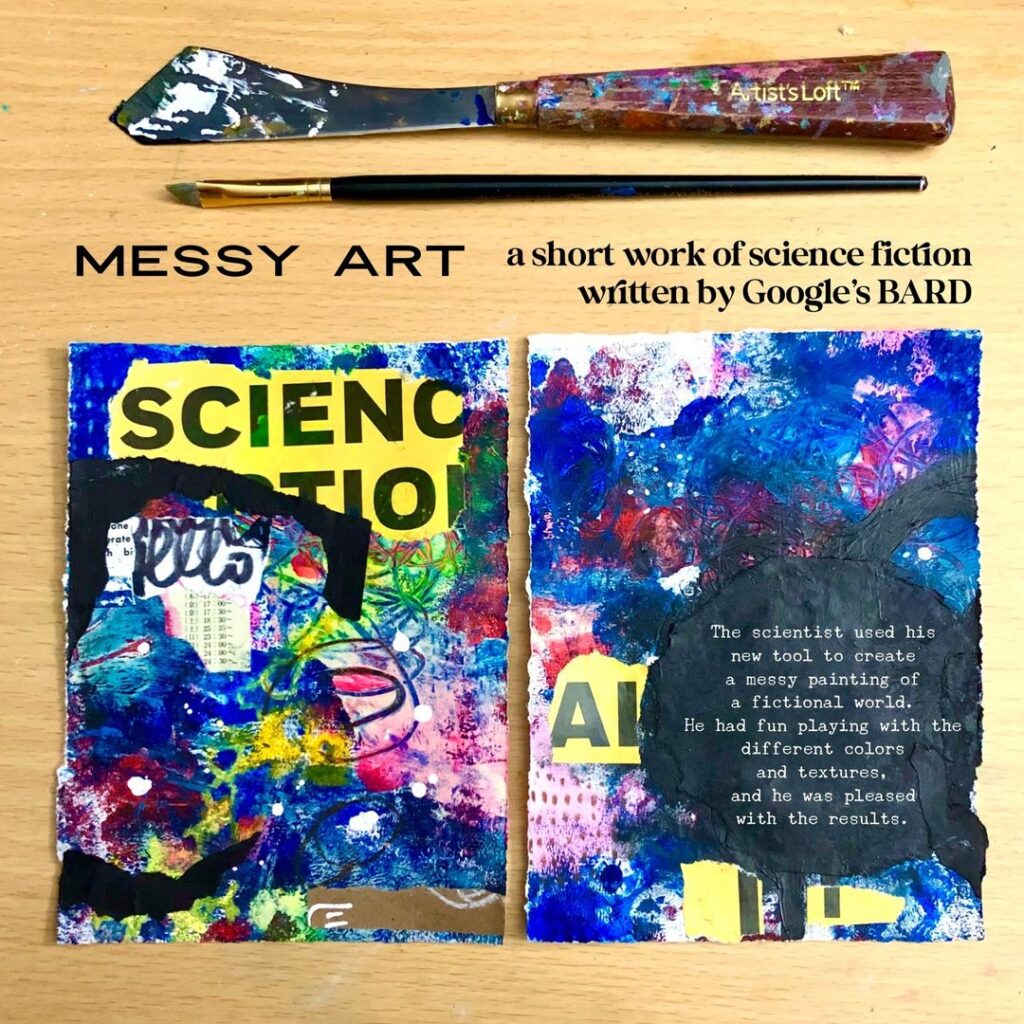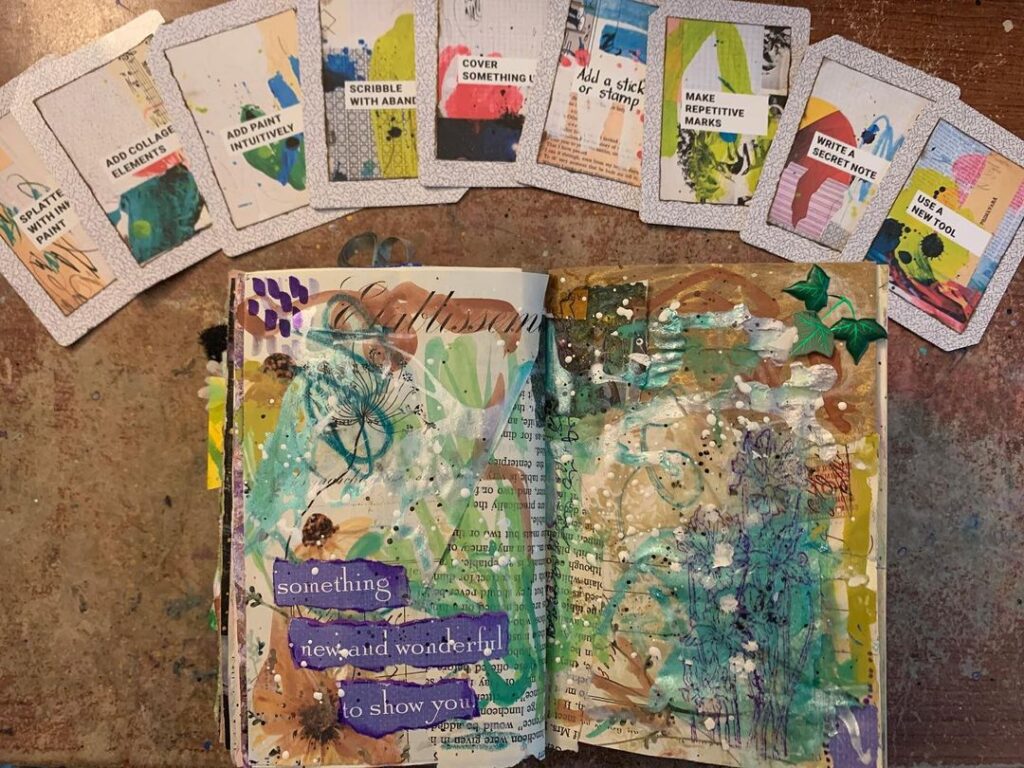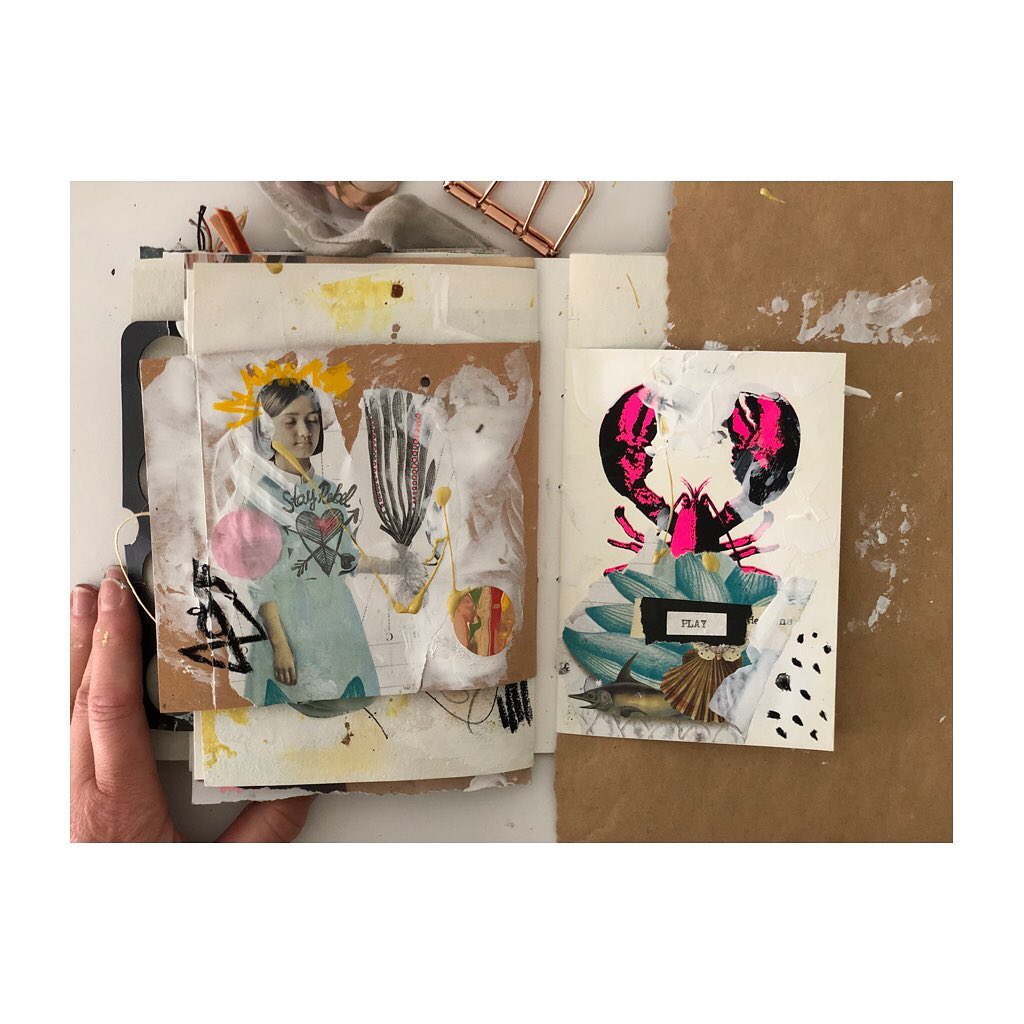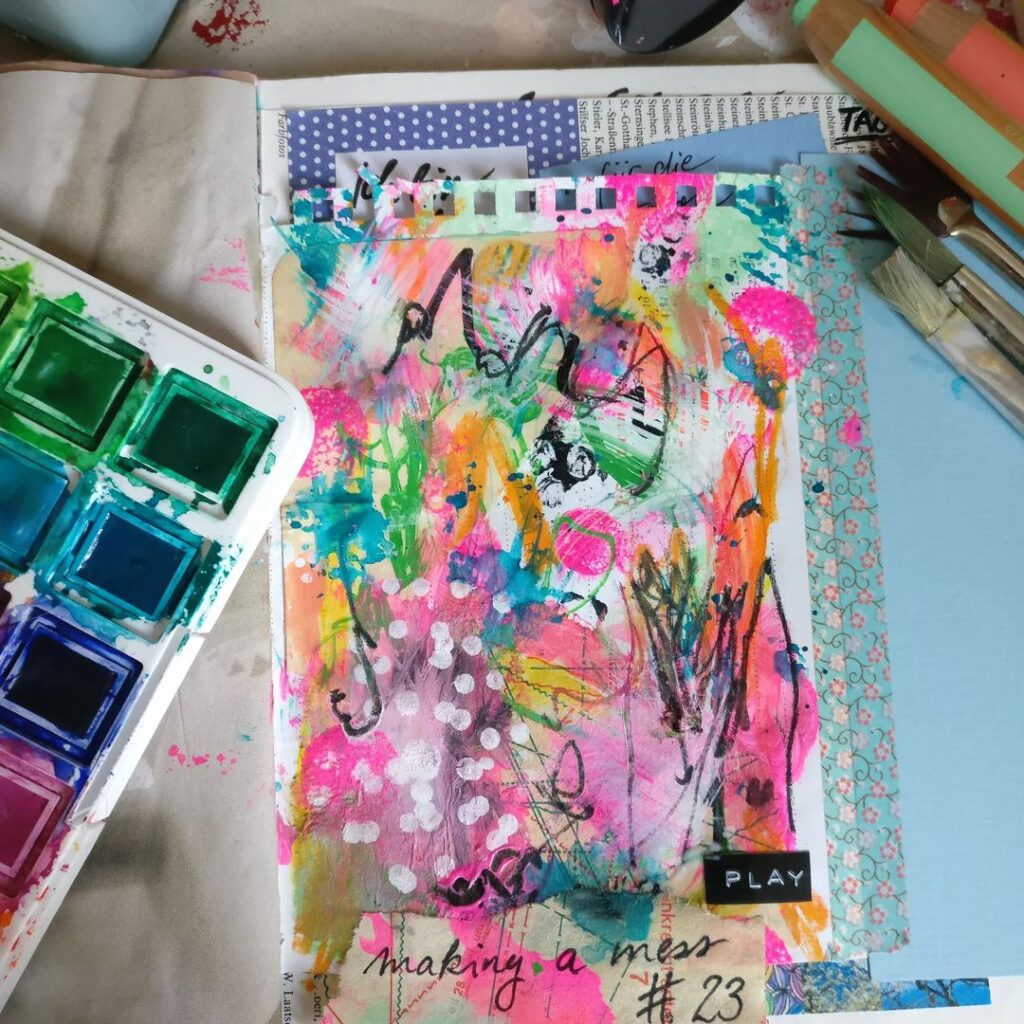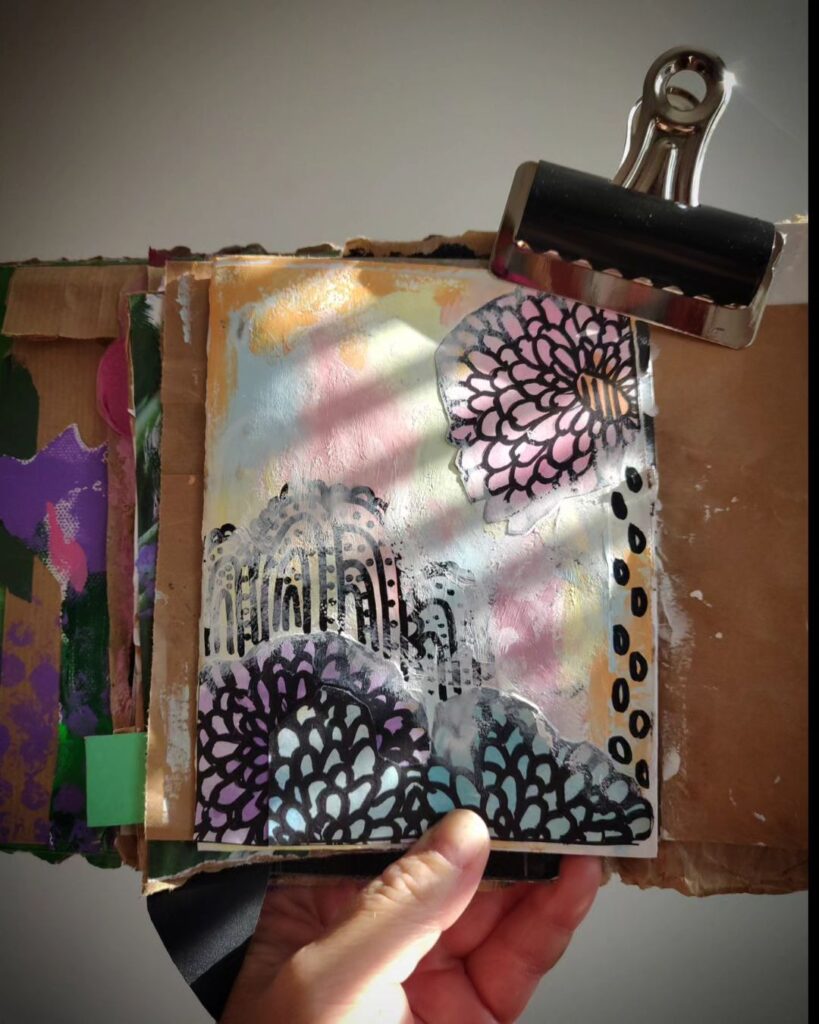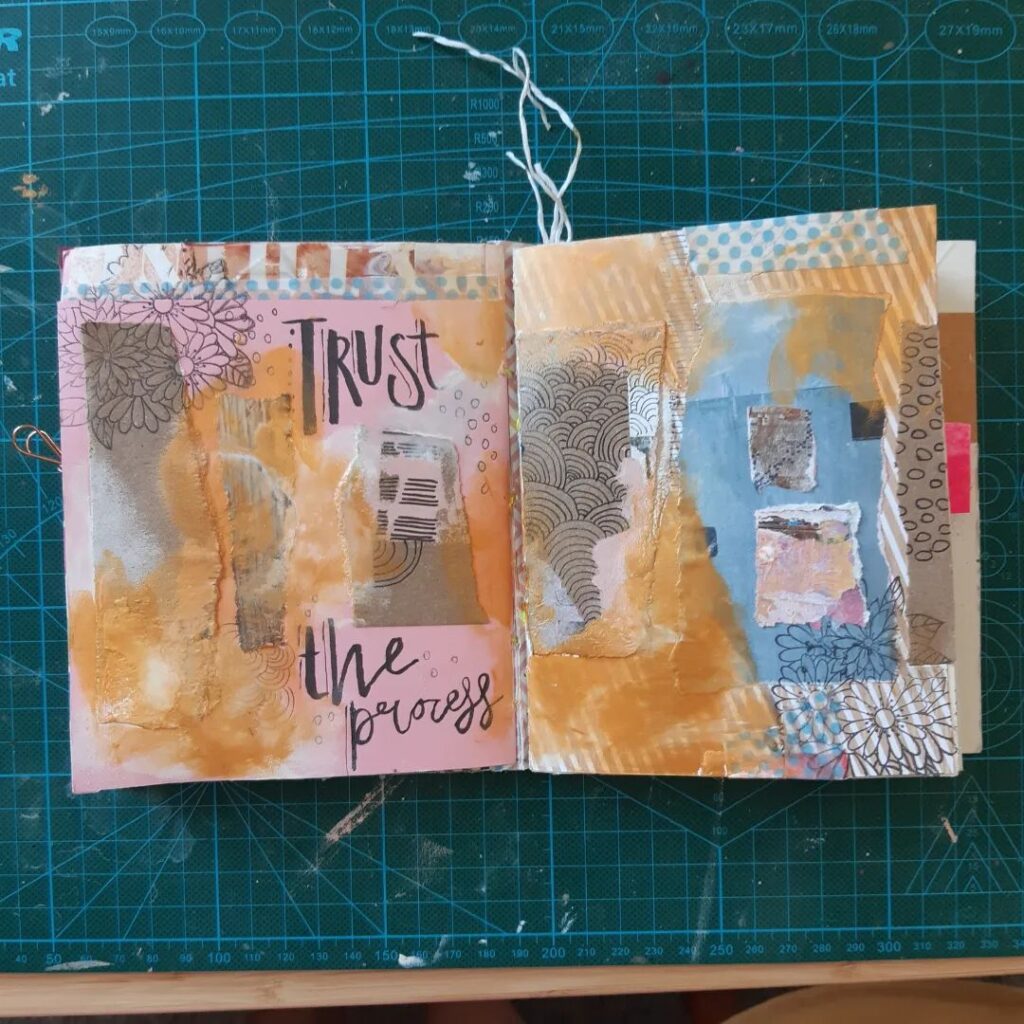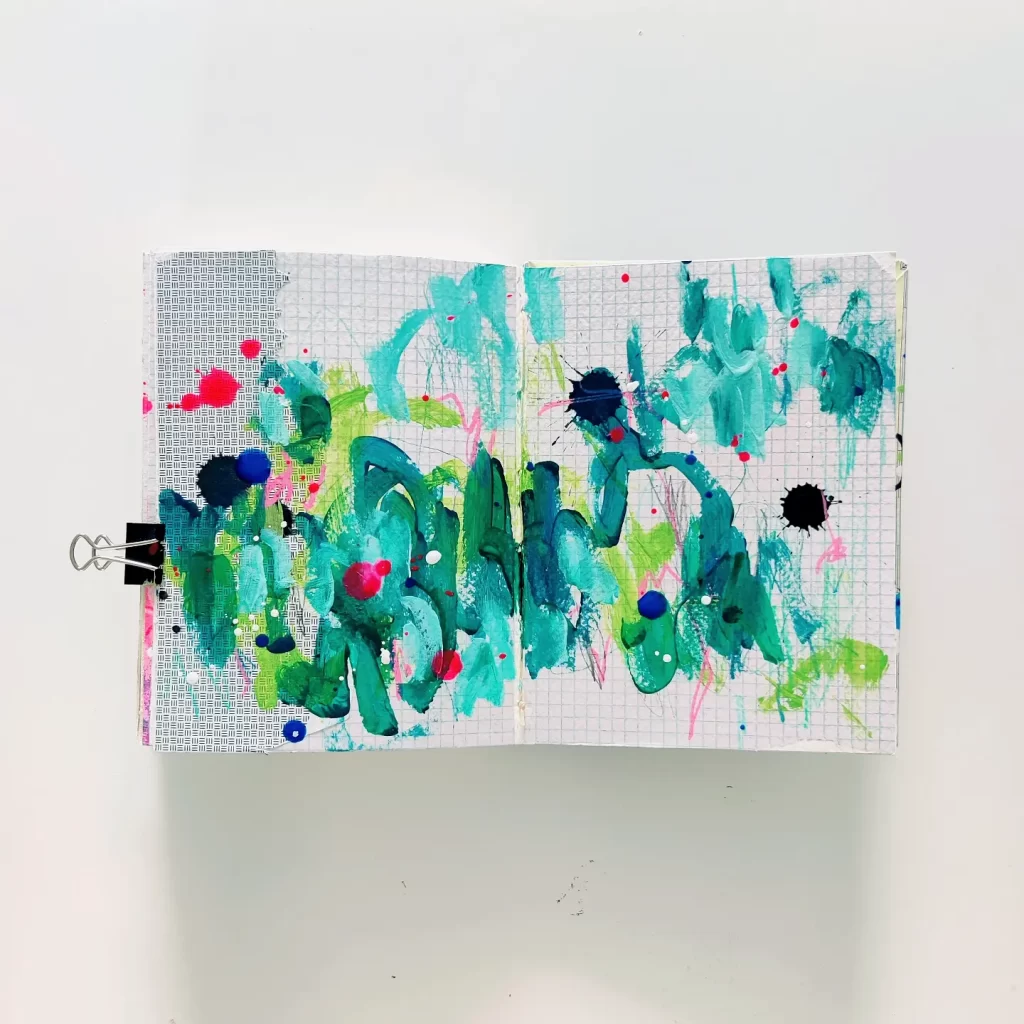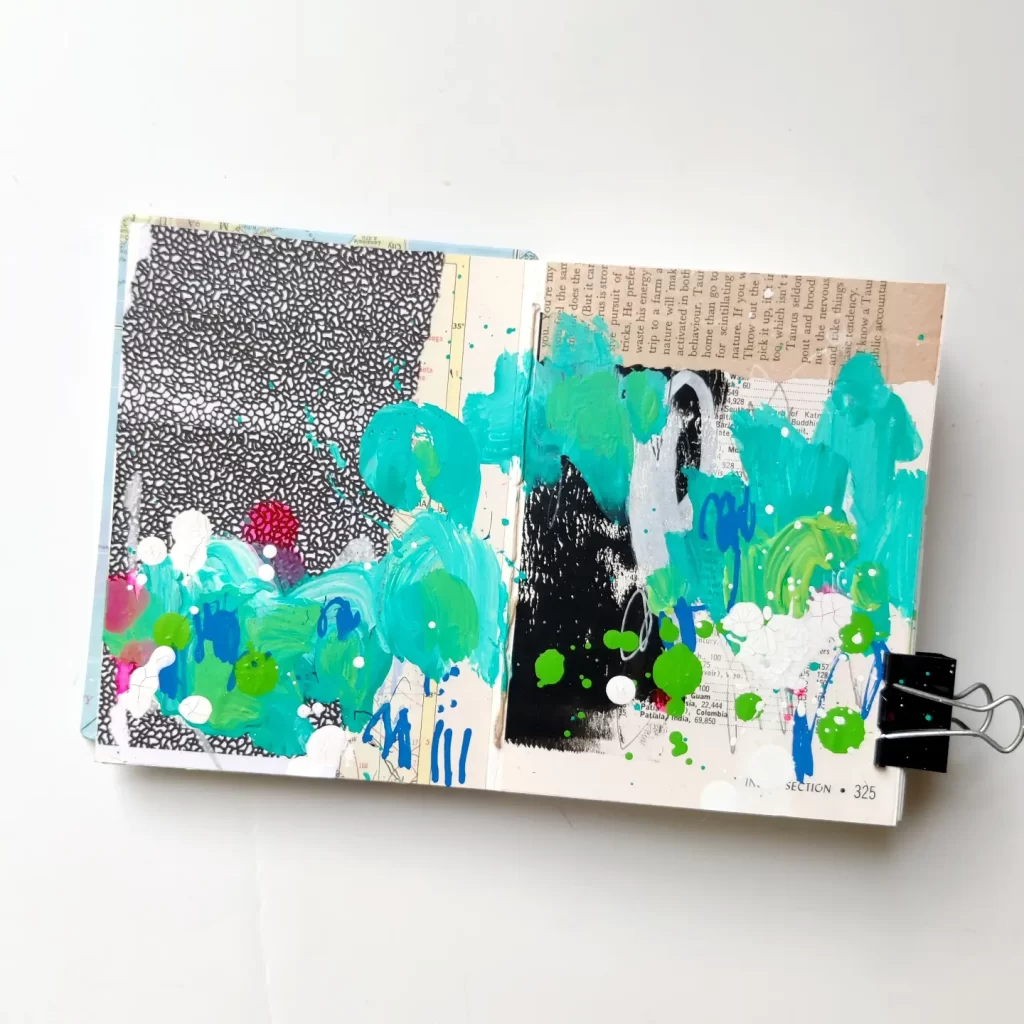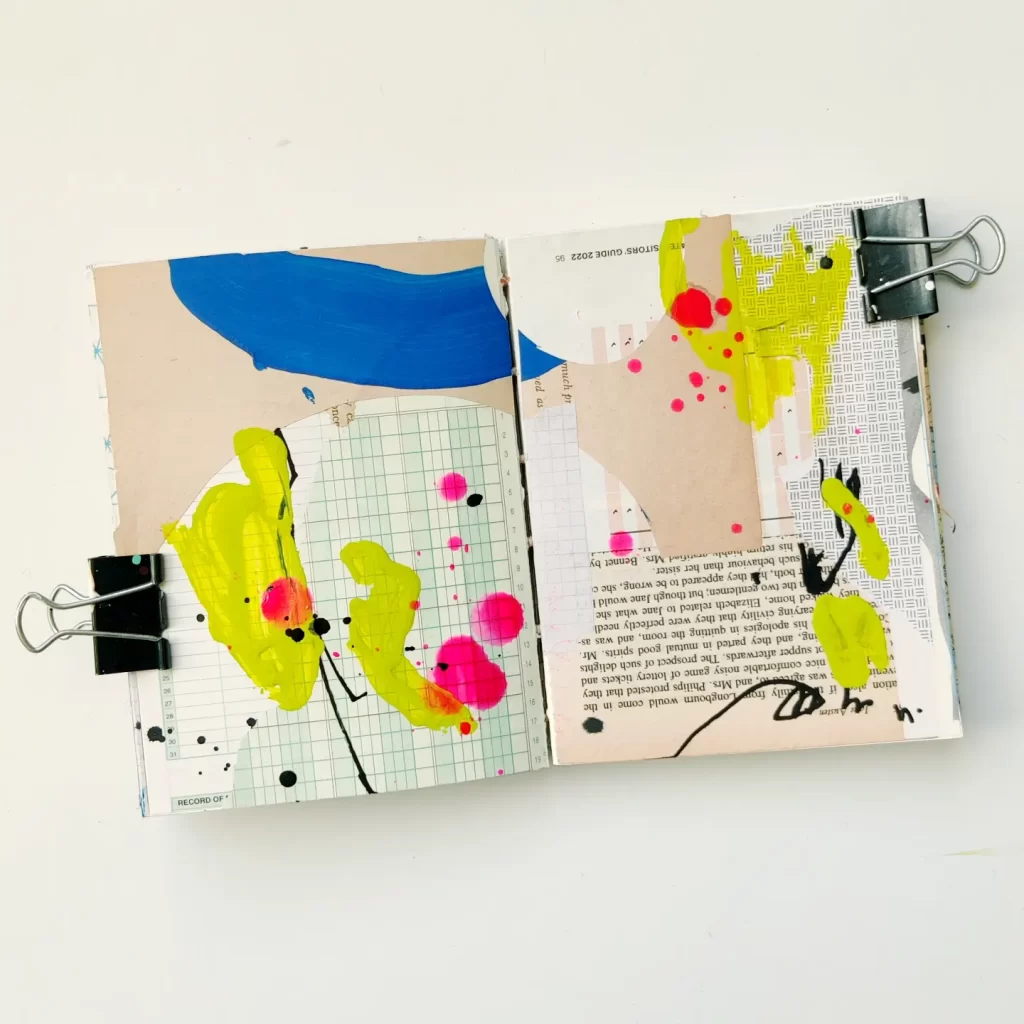Children’s art is one of my greatest inspirations: it’s intuitive and impulsive, without the confines of “should” and “can’t”. Kids don’t have any sense of limitation, or any reason to doubt their own abilities.
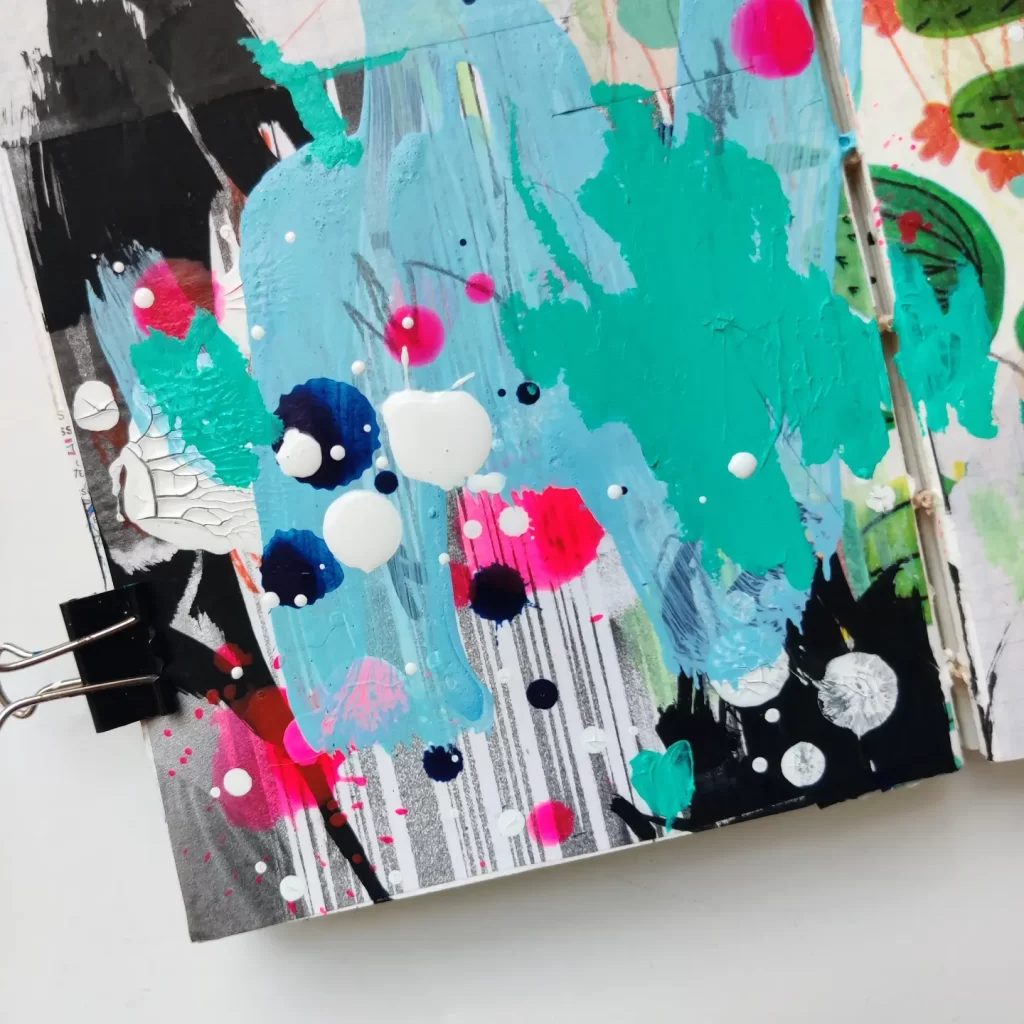
Picasso famously said “Every child is an artist. The problem is how to remain an artist once he grows up.” And, in one of my favorite talks ever, Do Schools Kill Creativity?, Sir Ken Robinson spoke about the confidence of a child drawing.
Today, I encourage you to pull out some paper, or canvas, and explore like a kid. Cheap materials work well for this kind of exercise: you’ll worry less about “wasting” your supplies and focus more on experimenting.
Try picking a color — paint, pen, pencil — and making random marks on a page. Close your eyes. Use your non-dominant hand.
Step back. What color is next? What color feels like it should come next? Add that.
Step back again, and look at what you’ve made. How does it make you feel? What is missing? What materials can you experiment with? What’s next?
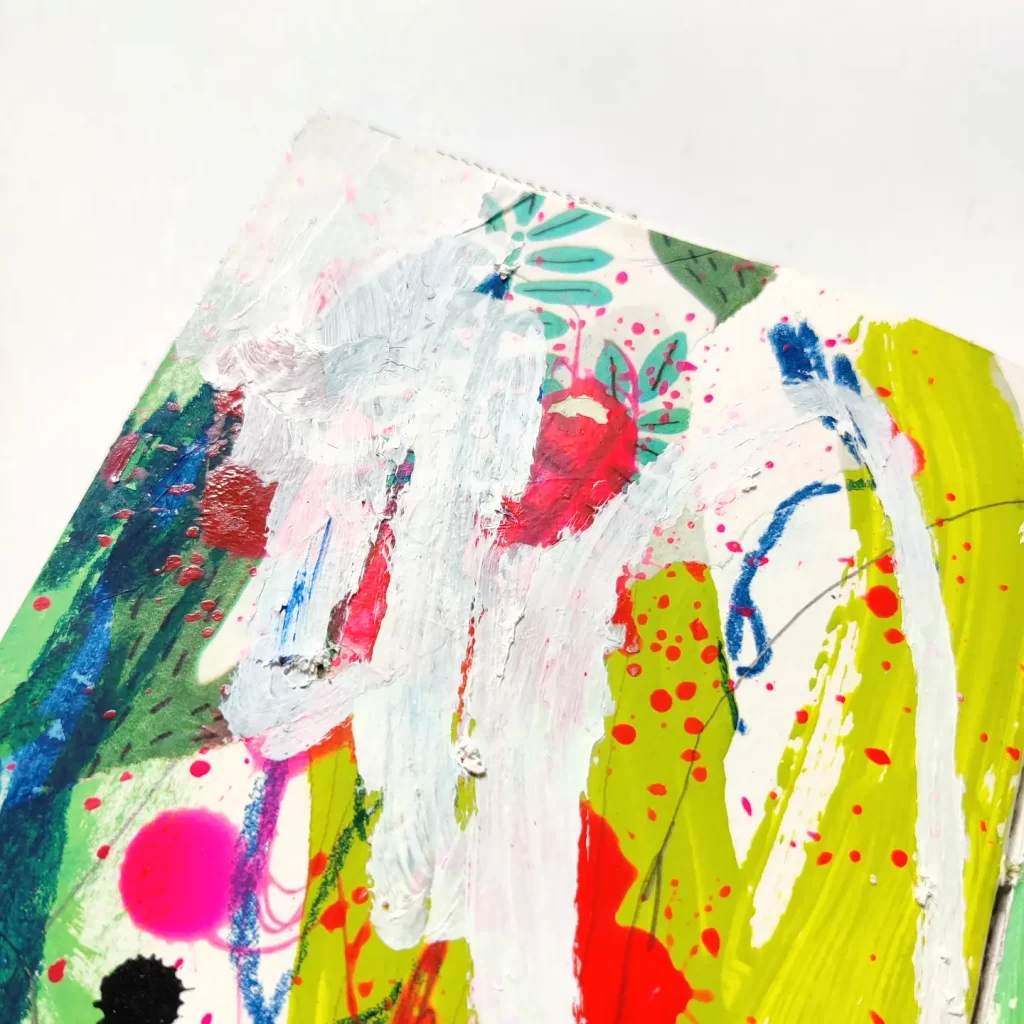
I find that when I create like this, I wind up with tons of messy pieces, some that I’ll toss or paint over. But often, I also end up with some very surprising and joyful works of art that I would never have discovered had I not let go and experimented.
Let go and channel your inner child: curious and unafraid of failing. And most importantly — have fun.
